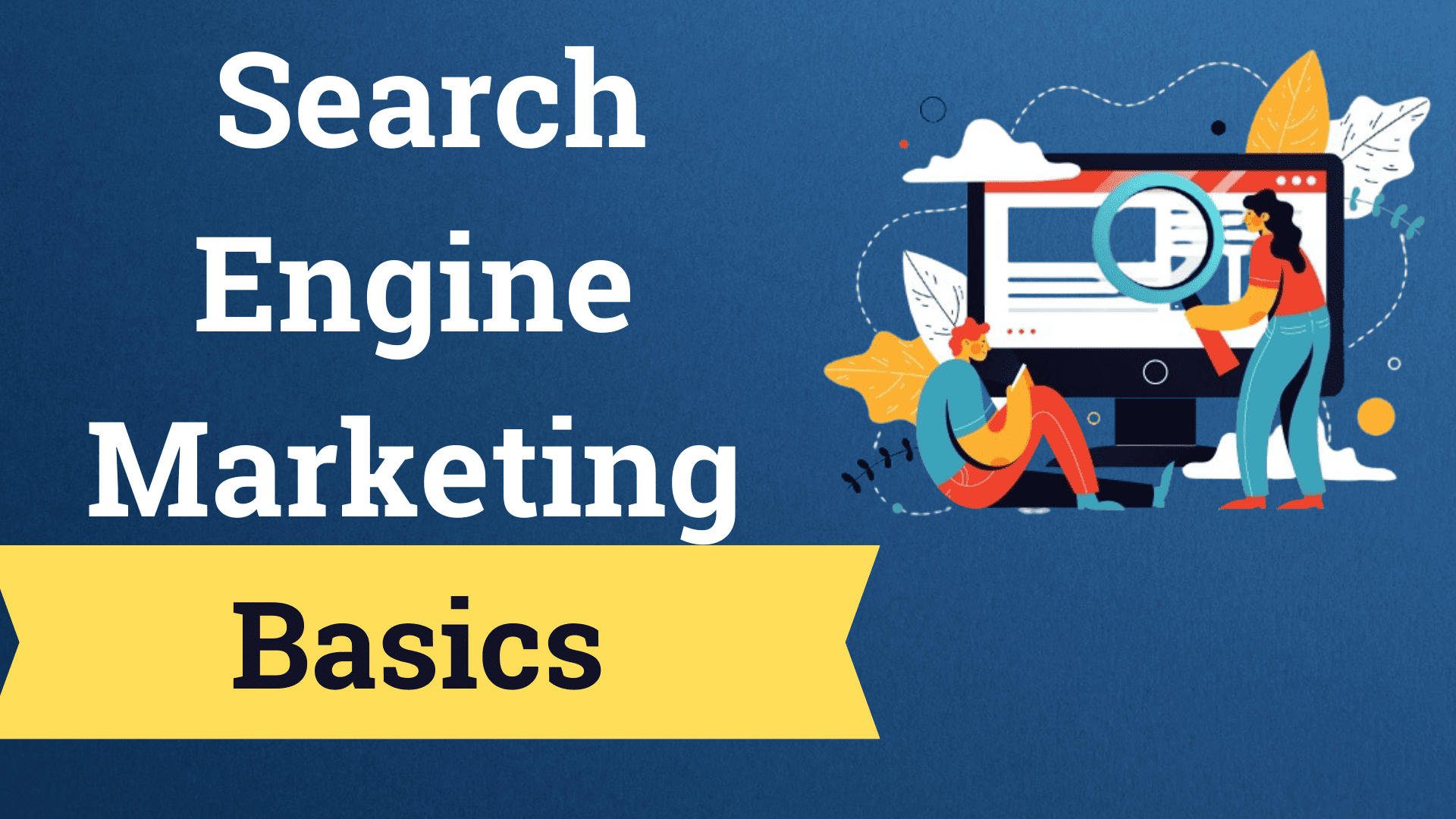What is Search Engine Marketing and How it works
Search Engine Marketing (SEM) – A must read and complete guide to Internet Marketing, achieving Internet presence, popularity and additional Web traffic.
It is a well-developed type of digital marketing which enables companies to improve their presence on the search engines results pages by paying for the advertisements.

In cut-throat internet environment, it helps organizations to target specific consumer groups, introduce genuine traffic generator in web sites and finally, enhancing the conversion ratios. Thanks to the billions of searches made every day on search engines such as Google, Bing, and Yahoo, SEM offers a transparent channel for corporations to gain access to prospective customers.
In this article we discuss about the definition of SEM, the main components of the approach and how businesses may benefit from it.
Search Engine Marketing How it Works?
Search Engine Marketing is the technique of marketing websites through raising its visibility or ranking in the list of search engine results mostly by the paid method. It may encompass both paid search ads and SEO & ranking factors, but it is best known for paid advertising or google pay-per-click advertising.
In PPC advertising, companies pay every time someone clicks a link that they put up which they can get through bidding on keywords associated with their business. When users type those words, the advertisements pop up either on the top or the bottom of the search engines’ results. The concept of google pay per click advertising is also popular because it requires the advertiser to pay for each click that a person makes on the ad.
Features of SEM
Technological innovation is raising the bar for the advertising and marketing trade, making the position of a senior search engine marketing specialist a must-have for any organization that wants to compete in today’s marketplace. Key Components of Search Engine Marketing involves several critical components, each contributing to the success of a campaign:
1. Knowing what keywords to use, Keyword Research and Selection
It starts with the research into specific keywords. The objective is to determine the exact terms people, who need your product or service, are typing into the search engine. These keywords are then utilized to generate adverts that pop up whenever a user enters similar or equivalent search strings.
2. To perform effective keyword research:
• Identify Target Audience: Get to analyze your target audience behavior, their requirements and how they search.
• Use Keyword Tools: Google Keyword Planner, Ahrefs or SEMrush can be used for that purpose for searching for high volume and relevant keywords.
• Balance Search Volume and Competition: This will ensure that you select keyword phrases that many people are using in surfing the web, but at the same time, few companies are using to promote their business.
3. Ad Copywriting
The selected keywords need to be combined with good ad text that will entice users to click through the ad. Writing effective ads requires:
• A Strong Headline: Title tags are supposed to be short and specific to ensure that they more or less reflect the user’s query, using the main keyword.
• Compelling Value Proposition: On the same, explain why your product/service is going to make the dream of the consumer come through and why it is different from the others in the market. Use tags to draw attention to current promotions, sales or to free trials.
• Call to Action (CTA): Make call to action, for instance, Buy Now, Sign Up Today, or Learn More.
4. Ad Extensions
Ad Extensions are supplementary tabs of data that may be incorporated to the advertisement to give more details. Common ad extensions include:
• Sitelink Extensions: This is especially no follow links to other pages on the site such as restaurant or cafes placement on your site.
• Call Extensions: Include a phone number for an easy reach in case of the emergency.
• Location Extensions: That means you should show where your business is to users looking for something close to them. They increase exposure, improve CTR and overall performance of the ads placed on the search network.
5. Bidding and Budget Management
In SEM, payers bid for the right to have their ads placed in the search engine results pages. Every advertiser provides a maximum value for keywords that he agrees to bid for placing the ad next to competitors’ ones. Google Ads employs a concept called Ad Rank, which is equal to the bid amount plus the Quality Score, contributing to ad relevance, as well as landing page quality.
There are several bidding strategies in SEM, including:
• Cost-per-click (CPC): Cost per click also known pay per click refers to the amount of cost you pay for the number of clicks you get on your ad.
• Cost-per-thousand impressions (CPM): CPM means that you pay for the number of times your ad is displayed, one thousand at a time, regardless of the click through rate.
• Cost-per-acquisition (CPA): An example of cost-per-acquisition model is where you only pay when a user performs an action that you desire, for example, buying a product or filling a form.
If an advertiser wishes to maintain its advertisement, he has to closely watch the budget and then pull up bids on the specific day and time, so as not to be outbid.
6. Landing Page Optimization
When users click on an SEM ad, they are taken to a landing page, in the form of a website or a web page section. Why is the landing page significant? The landing page defines if the user will convert, that is, if he or she completes the final action or not. To optimize landing pages:
• Ensure Relevance: These elements of the page should include the message of the ad and the keyword that is to be targeted.
• Simplify Conversion Process: Simplify a task where people will require fewer clicks to make a purchase or to complete a form.
• Improve Load Speed: Because it makes the site highly responsive, a fast loading of landing page hinders bounce rates.
7. Tracking and Analytics
The last but critical element that goes into SEM is tracking to evaluate the performance of such campaigns. Many of the search engines, for example Google Ads, can be easily integrated with analytics and social network accounts to track performance of the ads. Important metrics include:
• Click-through Rate (CTR): The number of people who clicked your ad out of the number of people who came across the ad.
• Conversion Rate: The extent to which visitors achieved a specific call to action such as a purchase or sign up after clicking on the ad.
• Return on Ad Spend (ROAS): A measure of how much revenue a company is able to produce with the money it spends on advertising. Crunching such figures is useful in decision making by business people in streamlining their campaign and maximizing ROI.
Advantages of Search Engine Marketing
Search engine marketing offers numerous advantages that can significantly boost a business’s online marketing efforts:
1. Immediate Results
Unlike SEO that takes time to rank a site and make it visible in an organic search engine result page, visibility is immediate with search engine marketing. Ad pop up immediately a campaign is underway enabling businesses to obtain traffic as soon as possible.
2. Highly Targeted Advertising
With SEM, companies can reach users according to some parameters like the keywords entered, the geographical area, the type of the device, and time. This means that your ads will only get to the right people so you are likely going to make a sale.
3. Cost-Effective
This makes it especially cost efficient since businesses only pay every time someone clicks on their ad thus driving traffic. Also, the organization of daily or monthly budgets helps to maintain ad spend under control.
4. Measurable Performance
SEM offers many detailed tools for the analysis and reporting of results, enabling business to monitor the effectiveness of their campaigns as and when it is being implemented. Such information allows marketers to know the successes and make modifications for the best impact to be realized.
5. Increased Brand Awareness
In addition, even where internet users do not ‘click through’ on the links, position in the search results also increases brand recognition. Engaging in the consistent posting throughout the series of related keywords can help the business create top of mind awareness and be recognized as a market leader.
SEM: The most effective real time practices
For businesses looking to make the most of it, here are some best practices:
1. Use Negative Keywords
Negative keywords are those that you don’t want to be associated with your campaigns in any way. For instance, if you own a site on luxury watches, you won’t want people who are searching for cheap, budget watches to be directed to your site. Negative keywords help you make sure that your ads appear only to the audience that will ultimately convert.
2. Optimize for Mobile
While using the mobile searches the majority of time, one has to make certain that the ads offered and the pages where people can become a part of are mobile-friendly. The factors are using of the engineering concept of responsive design, optimization of page load speed and creation of user-friendly mobile interfaces.
3. A/B Testing
Always test your ads, landing pages, call to actions because you cannot assume what the audience will respond to positively. Making changes to the ad copy, the images used, and even the audience you target can all benefit your ads.
4. Leverage Ad Extensions
As was noted earlier, ad extensions make your ads more visible and certainly more pertinent to the potential consumers. Help is to utilize as many of ad extensions as possible so that you offer more information to potential customers and entice them to click on your ad more often.
5. Monitor Competitors
Watch the activities of your competitors as relates to SEM. With the help of other tools such as SEMrush or SpyFu one could analyze the opponent’s represented keywords and, if necessary, make certain alterations to website’s advertising campaigns.
Conclusion
Now we get a basic understanding of what is search engine marketing. It is one of the best marketing techniques that can be used by business organizations in order to improve on their ranking on the web traffic and among the traffic visitors attain higher conversion rates. When choosing specific keywords, creating powerful ad messages, and aligning them with landing pages, any organization can achieve a high ROI through this method. Of course, it does need to be monitored and tweaked periodically, but with it, a brand or business can immediately increase their online presence and drive high quality traffic to its website.
Regardless of whether you are an upcoming company or a larger brand that is wanting to gain more market share SEM is fundamental to any company’s strategy.
Also Read:
Popular Posts

AHREFS
Ahrefs is one of the main heavyweight software originally designed as a backlink analysis tool now provides variety of seo services to optimize sites

SEMRUSH
SEMrush is a software that enables the user to improve the overall performance and make changes to their marketing strategies to compete with rivals.

Digital Marketing
Digital marketing refers to a broad category of marketing strategies designed for the process of brand promotion, attracting visitors and traffic..

What is Google Adsense
What is Google Ad sense? A facility provided by Google that enables website owners
to show ads with similar niche on their websites and earn money

Search Engine Marketing
Search engine marketing is a technique of running paid ads to increase website ranking in SERPS. Paid ads rank higher easily than organic results.

